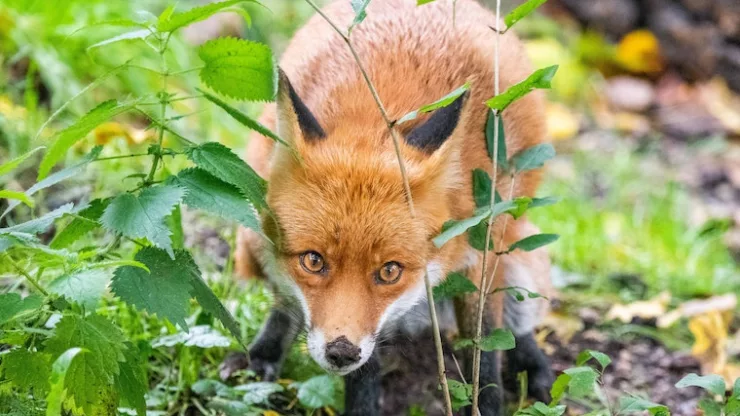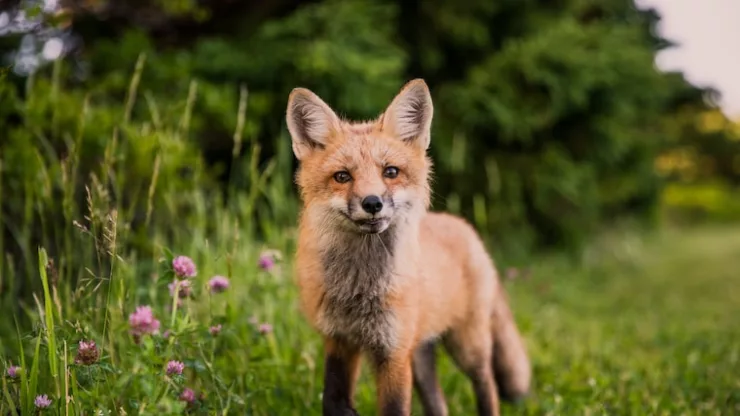Urban foxes are a common sight in many cities around the world. These wild animals have adapted to living in urban areas, but what do they eat?
In this article, we will dig into the diet of urban foxes, unveiling the delicious details of what they eat, how they obtain their food, and the implications of their diet.
Jump to Section
Introduction
Foxes are omnivorous animals, which means they eat both meat and plants.
In the wild, they eat a variety of foods, including small mammals, birds, insects, fruits, and vegetables.
However, urban foxes have a different diet due to the availability of food in cities.
Why Study the Diet of Urban Foxes?
Understanding the diet of urban foxes is important for several reasons.
Firstly, it can help us learn more about how these animals have adapted to living in urban environments.
Secondly, it can help us understand the ecological impact of urbanization on wildlife. Lastly, it can help us identify potential public health risks associated with urban foxes.
What Do Urban Foxes Eat?
Urban foxes eat a variety of foods, both from natural sources and human-related sources.
Main Food Sources
Small Mammals
Small mammals are a primary food source for urban foxes. These include rodents such as mice and rats, as well as rabbits and squirrels.
Birds
Birds are also a common food source for urban foxes.
They prey on both ground-nesting birds such as pigeons and songbirds, as well as birds that nest in trees.
Invertebrates
Invertebrates such as insects and worms are an important food source for urban foxes, especially during the spring and summer months.
Supplementary Food Sources
Fruits and Vegetables
Urban foxes also eat fruits and vegetables.
They often raid gardens for fruits such as apples and berries, and they may also eat vegetables such as carrots and potatoes.
Garbage
Garbage is a significant food source for urban foxes.
They are known to raid garbage bins in search of food, especially in areas where food waste is not properly disposed of.
Pet Food
Urban foxes may also eat pet food that is left outside. This is especially common in areas where pet owners leave food out for their pets overnight.
How Do Urban Foxes Obtain Their Food?
Urban foxes obtain their food in several ways, including hunting, scavenging, and raiding gardens and garbage bins.
Hunting
Urban foxes hunt primarily at night and early morning. They use their keen sense of hearing and smell to locate prey, and they are skilled hunters.
They often hunt small mammals such as rodents and rabbits, as well as birds.
Scavenging
Urban foxes also scavenge for food. They are opportunistic scavengers and will eat anything that is easily available, including roadkill and discarded food.
Raiding Gardens and Garbage Bins
Urban foxes also raid gardens and garbage bins for food.
They are known to be particularly attracted to areas where food waste is not properly disposed of, such as restaurants and fast food outlets.
Seasonal Changes in the Diet of Urban Foxes
The diet of urban foxes varies throughout the year, depending on the availability of food.
Winter Diet
During the winter months, when food is scarce, urban foxes rely heavily on small mammals such as mice and rats.
They may also scavenge for food in garbage bins and eat pet food that is left outside.
Spring and Summer Diet
In the spring and summer months, urban foxes have access to more food sources, including invertebrates such as insects and worms, as well as fruits and vegetables.
They may also prey on ground-nesting birds during this time.
Fall Diet
In the fall, urban foxes begin to prepare for winter by storing food.
They may raid gardens for fruits and vegetables to eat or store, and they may also hunt small mammals to store for later.
Implications of the Diet of Urban Foxes
The diet of urban foxes has several implications, including ecological, public health, and conservation implications.
Ecological Implications
Urbanization has had a significant impact on wildlife, including urban foxes.
By understanding the diet of urban foxes, we can better understand how these animals have adapted to living in cities and the impact of urbanization on their natural diet.
Public Health Implications
Urban foxes can carry diseases that can be transmitted to humans and pets.
By studying their diet, we can identify potential public health risks associated with urban foxes, such as the risk of disease transmission through contact with garbage or pet food.
Conservation Implications
Urban foxes are an important part of urban ecosystems, and understanding their diet is important for conservation efforts.
By identifying their food sources, we can better understand how to protect these animals and their habitats in urban areas.
Conclusion: The Importance of Studying the Diet of Urban Foxes
Studying the diet of urban foxes is important for understanding how these animals have adapted to living in cities, the impact of urbanization on their natural diet, and the potential public health risks associated with them.
By understanding their diet and how they obtain their food, we can better protect these animals and their habitats in urban environments.
FAQ
What do urban foxes eat the most?
Urban foxes eat small mammals, birds, and invertebrates the most.
Do urban foxes eat fruits and vegetables?
Yes, urban foxes eat fruits and vegetables, and they often raid gardens for these foods.
Are urban foxes dangerous to humans?
Urban foxes are generally not dangerous to humans, but they can carry diseases that can be transmitted to humans and pets.
It is important to avoid contact with them and keep garbage and pet food properly secured.
I’m a nature enthusiast and creator of Metro Wilds and have spent years exploring the great outdoors.
With a passion for environmental conservation and sustainability, I have dedicated my career to writing about the beauty and wonders of nature, as well as the threats facing our planet.
Contact me at [email protected] for assistance.





